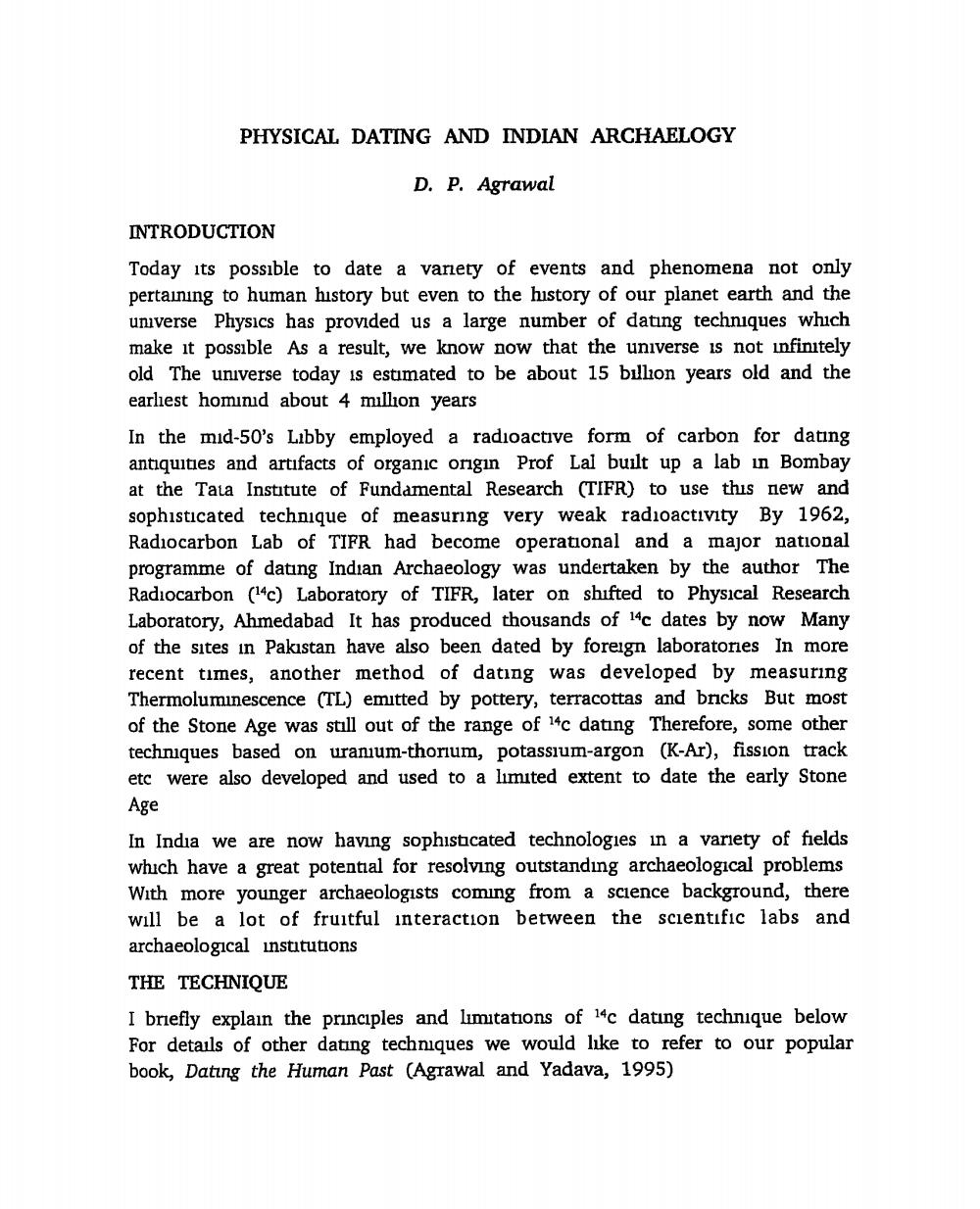________________
PHYSICAL DATING AND INDIAN ARCHAELOGY
D. P. Agrawal
INTRODUCTION Today its possible to date a vanety of events and phenomena not only pertaining to human history but even to the history of our planet earth and the universe Physics has provided us a large number of dating techniques which make it possible As a result, we know now that the universe is not infinitely old The universe today is estimated to be about 15 billion years old and the earliest homınıd about 4 million years In the mid-50's Libby employed a radioactive form of carbon for dating antiquities and artifacts of organic origin Prof Lal built up a lab in Bombay at the Tata Institute of Fundamental Research (TIFR) to use this new and sophisticated technique of measuring very weak radioactivity By 1962, Radiocarbon Lab of TIFR had become operational and a major national programme of dating Indian Archaeology was undertaken by the author The Radiocarbon (140) Laboratory of TIFR, later on shifted to Physical Research Laboratory, Ahmedabad It has produced thousands of 14c dates by now Many of the sites in Pakistan have also been dated by foreign laboratories in more recent times, another method of dating was developed by measuring Thermoluminescence (TL) emitted by pottery, terracottas and bricks But most of the Stone Age was still out of the range of 14c dating Therefore, some other techniques based on uranium-thorium, potassium-argon (K-Ar), fission track etc were also developed and used to a limited extent to date the early Stone Age In India we are now having sophisticated technologies in a variety of fields which have a great potential for resolving outstanding archaeological problems With more younger archaeologists coming from a science background, there will be a lot of fruitful interaction between the scientific labs and archaeological institutions THE TECHNIQUE I briefly explain the principles and limitations of 14c dating technique below For details of other dating techniques we would like to refer to our popular book, Dating the Human Past (Agrawal and Yadava, 1995)




